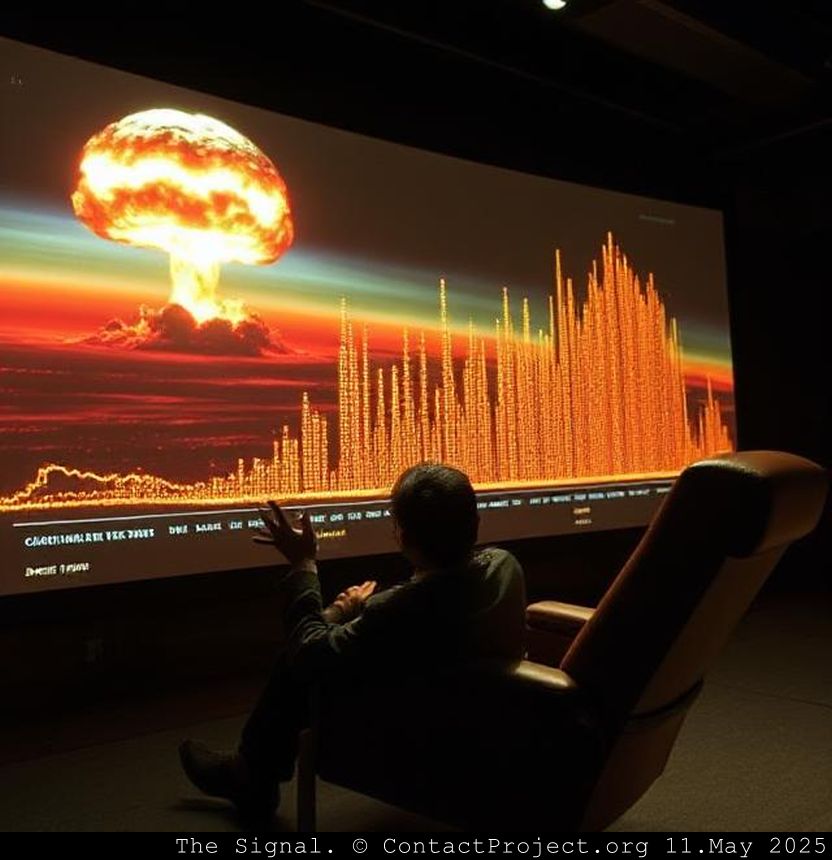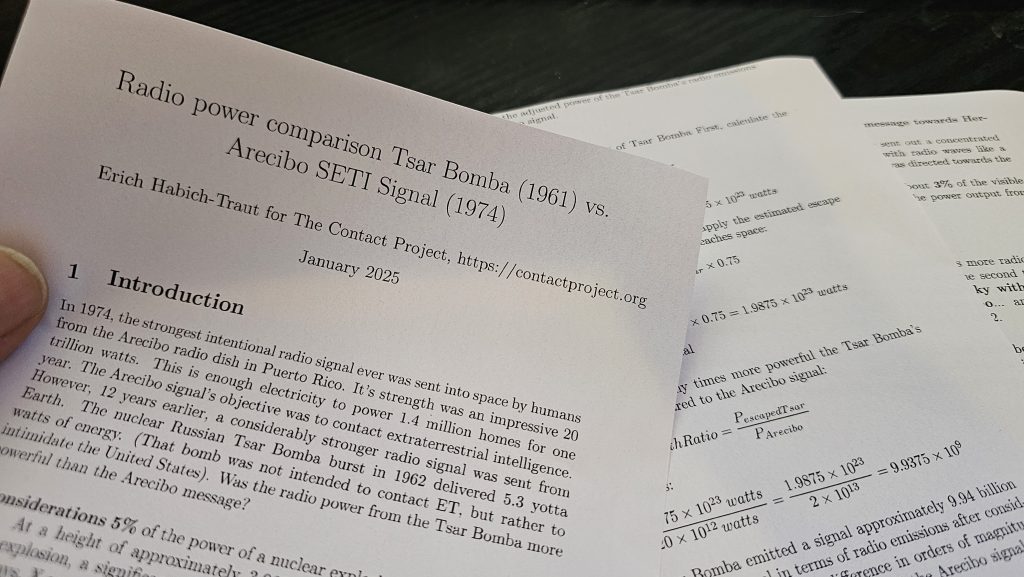A Science Fiction Short Story: In a universe filled with mysteries, the discovery of an extraterrestrial signal could change everything.
Chapter 1: The Question
Ray Faser leaned back in his chair, fingers steepled, staring at the projection of Earth’s nuclear test history—a timeline of detonations stretching from 1945 to 1996. The data pulsed like a slow, irregular heartbeat.

Two thousand nuclear blasts. Each one had sent an electromagnetic scream (EMP) into the void.
On the other side of the screen, Dr. Elias Varen, a senior astrophysicist with the SETI Institute, adjusted his glasses.
“You’re suggesting we’ve already announced ourselves.”
Ray consulted a printout and smirked.

“I’m saying we lit a bonfire in the ‘Dark Forest‘. And now we’re whispering ‘Hello?’ like we’re afraid of being rude.”
Varen exhaled. “The difference is intent. A nuclear EMP is noise. A structured message is a handshake.”
Ray leaned forward. “You think an advanced civilization hears a thousand atomic explosions and thinks, ‘Hmm, must be background radiation’? They’ll know what it is. And they’ll know it’s dangerous.”
Chapter 2: The UAP Variable
The Pentagon’s recent disclosures hung between them like an unspoken specter. Unidentified Anomalous Phenomena—craft defying known physics, lingering in Earth’s skies for decades.
Ray tapped the table. “If they’re already here, silence isn’t caution. It’s stupidity. We should be sending ‘We come in peace’ in every frequency we’ve got.”
Varen’s jaw tightened. “Or we’re confirming we’re a threat. Nuclear weapons, uncontrolled emissions—what if they’re waiting to see if we grow up?”
“Or waiting to see if we shoot first,” Ray countered. The Dark Forest isn’t just a theory. It’s a mirror. We’re the ones who nuked ourselves two thousand times. We’re the predators.”
Chapter 3: The Silence Gambit
A new voice cut in—Dr. Elena Papadakis, a xenopsychologist. “Assume they have detected us. Silence could be read as hostility. A predator hiding.”
Varen shook his head. “Or prudence.”
Ray laughed bitterly. “Prudence? We’re ostriches. Heads in the sand, asses in the air.”
He pulled up the latest UAP footage—a tic-tac object maneuvering at Mach 10. “They aren’t hiding. Why are we?”
Chapter 4: The Decision
The room fell quiet. The screen flickered, overlaying Earth’s radio bubble—expanding at light speed for a century, a glowing sphere of TV broadcasts, radar pings, and nuclear EMPs that might just serve as an unintended extraterrestrial signal.
Elena broke the silence. “If they’re here, they already know who we are. The question isn’t if we signal. It’s what we say.”
Ray leaned back. “How about ‘We’re not all psychopaths’?”
Varen didn’t smile. “Or we prove it.”
Outside, the stars burned cold and distant. Waiting.
Epilogue: The First Message
Three months later, the Arecibo successor array sent a single, repeating sequence toward a UAP hotspot.
Not mathematics. Not science.
Music.
Beethoven’s “Ode to Joy.”
A handshake—or a plea.
The Dark Forest listened.
——————-
Author’s note
The character of Ray Faser (and his author) have been waiting for reactivation ever since their first and last appearance in a short science-fiction story in a school newspaper in 1979.
Reference:
The history of nuclear testing began early on the morning of 16 July 1945 at a desert test site in Alamogordo, New Mexico when the United States exploded its first atomic bomb. In the five decades between that fateful day in 1945 and the opening for signature of the Comprehensive Nuclear-Test-Ban Treaty (CTBT) in 1996, over 2,000 nuclear tests were carried out all over the world.
https://www.un.org/en/observances/end-nuclear-tests-day/history
Arecibo message power vs Tsar Bomba Calculation
(Nuclear bomb sent 10 billion times more radio waves into space than Arecibo.) (PDF) Arecibo message power vs Tsar Bomba Calculation
—————————-
#fypシ゚



